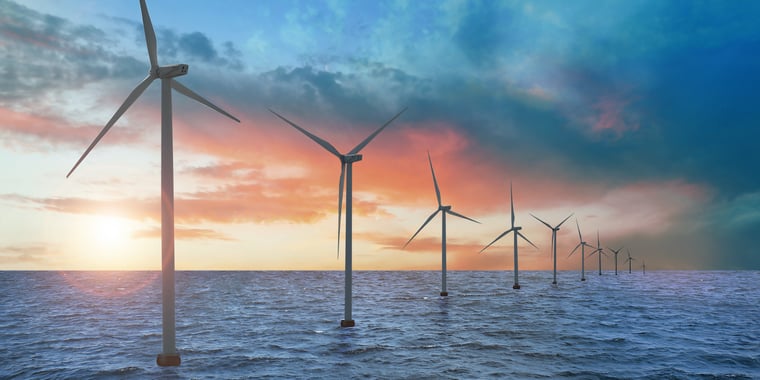To meet DNV-GL guidelines and minimise downtime, evaluating marine weather forecast providers for your wind farm installation operation is key. How do you select a marine weather provider that helps optimising the operation of your wind farm installation?
Before a wind farm installation starts, key stakeholders like investors, public authorities and Marine Warranty Surveyors need to know that the operations will be done safely. To ensure this the industry looks toward guidelines of organizations like DNV-GL.
Besides that, the offshore operations manager heading the project is responsible for installing the wind farm as efficiently as possible. This requires the weather forecast to be as reliable as possible, giving confidence to all involved.
Here are three questions to ask when selecting a marine weather forecast provider.
1. Are you able to archive weather windows?
The renewable industry is highly dependent on third party investors. Meanwhile, public authorities want to make sure they’re dealing with a reliable partner who operates according to the guidelines applicable. During the installation operation, third party stakeholders keep a close eye on the investments they make and the risks they are involved with. Hence, they are dependent on the contracting company to make the right decisions that ensure safe operations combined with an optimal level of uptime.
A common way to further mitigate weather risks is the use of DNV-GL guidelines, based on Alpha Factors. However, how do you prove you’re working according to this Alpha Factor and base decisions on it? In other words, how does the marine weather provider aid to prove you're not liable for the additional costs made due to the unworkable weather conditions.
Marine weather forecast providers that incorporate the thresholds associated with the Alpha Factor into the forecast, allow project teams to make the right decisions faster. The applicable weather limits derived from the Alpha Factor define a weather window, helping to explain why precautionary measures were taken on a specific day.
When all weather reports are stored in a weather dashboard, including the weather windows based on the Alpha Factor, this archive allows operation managers to always look back on the weather forecast data decisions were based on.
2. Can you visualize thresholds for various vessels?
Installing a wind farm park is very complex, and thus operation managers need to consider many operational requirements for different parts of their operation, often at the same time. The equation is complicated further when different vessels have different operational limits, maneuvering capabilities and operational costs.
If your marine weather provider is able to provide you with a dashboard which allows you to visualize multiple thresholds, it makes it easier to see in a glance, what the weather window is for each vessel and whether they’re able to operate simultaneously or not. Or even to select the most cost-efficient vessel to carry out the work.
3. Are you able to integrate environmental, observational data?
Wind and wave monitoring are an additional technique to decrease the margins (the Alpha Factor) for your operation. In the past, environmental monitoring used to be a costly affair as equipment and its installation was a specialist task. Recent developments allow contractors to use in-situ observation data more easily for various offshore operations projects.
Some marine weather forecast providers even integrate data from environmental monitoring into the forecast either by tuning the forecast models used or by optimizing the latest forecasts using the observations. As a consequence, situational awareness is increased and wave forecasting becomes more reliable, leading to the Alpha Factor of your project being adjusted.
How to integrate weather data?
In December 2021, we hosted a webinar with guest speakers from Spirit Energy and Peterson Energy Logistics to discuss a case in the Greater Markham area and how weather data can optimise offshore supply logistics.



